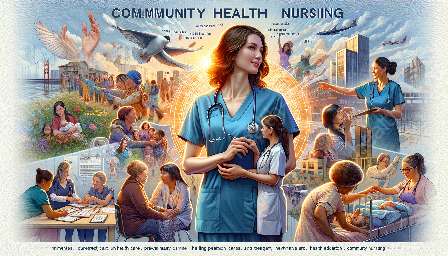Understanding the concepts of epidemiology and biostatistics is essential for community health nursing practitioners as they work to improve public health outcomes and address community health concerns. This article explores the intersection of epidemiology and biostatistics with the nursing profession, emphasizing how these fields inform public health interventions and nursing practice.
The Intersection of Epidemiology, Biostatistics, and Nursing
Epidemiology is the study of the distribution and determinants of health-related states or events in specified populations, and the application of this study to the control of health problems. Biostatistics, on the other hand, involves the development and application of statistical methods to address problems in the biological and health sciences.
Community health nursing embodies a public health approach to care, focusing not only on individual patient care, but also on efforts to promote and protect the health of populations. Epidemiological and biostatistical principles are fundamental to providing evidence-based and population-focused nursing care in community settings.
Key Concepts in Epidemiology
Disease Distribution: Epidemiology investigates the distribution and patterns of diseases within populations, including the frequency of the disease, its geographical distribution, and its occurrence in different demographic groups.
Disease Determinants: The field also explores the factors that contribute to the occurrence and spread of diseases, including biological, environmental, social, and behavioral determinants.
Disease Surveillance: Epidemiologists engage in monitoring and tracking the occurrence of diseases and health events to inform disease control and prevention efforts.
Biostatistics in Public Health
Data Collection and Analysis: Biostatisticians play a critical role in collecting, analyzing, and interpreting health-related data to provide evidence for public health decision-making and policy development.
Hypothesis Testing: Through statistical hypothesis testing, biostatisticians assess the significance of research findings and determine whether observed differences are valid or due to chance.
Quantifying Public Health Risks: Biostatistics is instrumental in quantifying the risks associated with various health factors, such as environmental exposures, behavioral patterns, and genetic predispositions.
Informing Nursing Practice
Epidemiological and biostatistical data are critical in guiding nursing practice in community health settings. Nurses use this information to:
- Identify priority health needs within communities
- Plan and implement targeted interventions to address health disparities
- Evaluate the effectiveness of public health initiatives and policies
- Advocate for evidence-based healthcare practices and policies
- Collaborate with other healthcare professionals to improve population health outcomes
Case Studies in Community Health Nursing
Through case studies, community health nurses can gain practical insights into the integration of epidemiological and biostatistical principles into their nursing practice. Examples might include:
- An analysis of the epidemiological data related to a local outbreak of a communicable disease, informing the development of targeted intervention strategies.
- An assessment of the biostatistical evidence supporting the implementation of a community-wide screening program for a chronic health condition.
- An evaluation of the impact of a public health education campaign on the reduction of specific health disparities within a community.
The Role of Nurses in Public Health Research
Nurses play a crucial role in contributing to public health research through their engagement with epidemiological and biostatistical principles. They may be involved in:
- Collecting and analyzing health-related data during community assessments
- Participating in research studies focused on public health interventions and outcomes
- Translating research findings into practice to improve population health
- Addressing health disparities and inequities in underserved communities
- Adopting innovative technologies for data collection and analysis
- Advocating for evidence-based policies to support public health initiatives
- Fostering interdisciplinary collaborations to address complex public health challenges
Challenges and Future Directions
As the fields of epidemiology, biostatistics, and community health nursing continue to evolve, several challenges and opportunities emerge. These include:
Conclusion
Epidemiology and biostatistics serve as essential pillars in the practice of community health nursing, providing the evidence base necessary for effective population-focused care and public health interventions. By understanding and applying the principles of these fields, nurses can make significant contributions to improving the health and well-being of communities.


